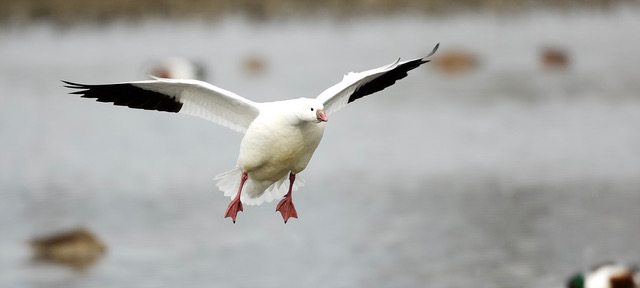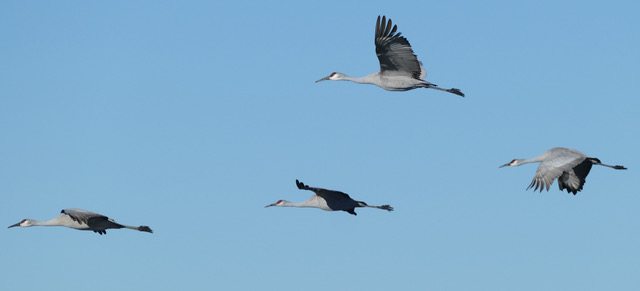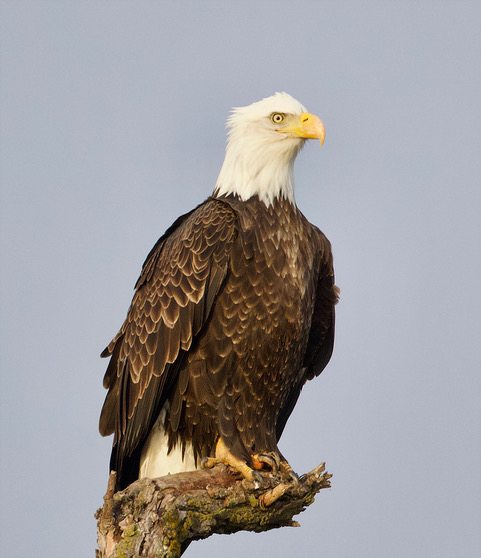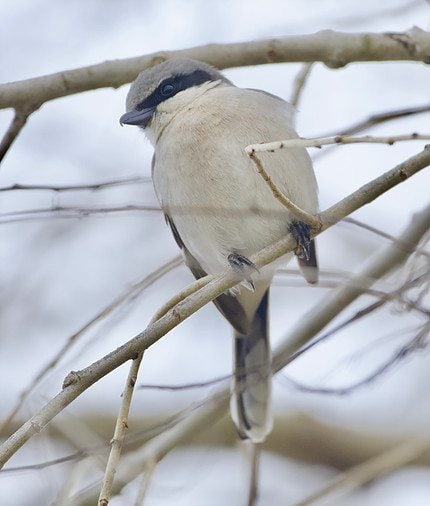Treasure hunting
By Eric James Schroeder
As I drove into the Maxwell Cemetery, I was doubtful. As birding habitat goes, this small country cemetery in the middle of California’s Central Valley didn’t look very promising. Grass, a few scattered shrubs and trees, and many weathered upright grave markers. I parked my car on a narrow gravel road in the center of the small cemetery and got out. Perched on a tall headstone about 25 feet away from me was a bright red bird that was about 350 miles north of its extended range—a Vermilion Flycatcher.

This was Day Two of the GGBA weekend field trip for the Migrant Treasure Hunt class, and we were exploring California’s Central Valley. The field trip had begun the day before in the northeast corner of the California Delta at Staten Island on a cold, clear morning. The fields around us were packed with Tundra Swans, Snow Geese, Ross’s Geese and some Canada Geese. Looking south towards Mt. Diablo we could see a spectacular sight—thousands of birds flying in long chains in the early morning light. After a couple of hours, though, 16 birders plus leader Juan-Carlos Solis were all glad to get back in our cars to warm up.
A short drive took us to Consumnes River Preserve, where big numbers of geese again greeted us, with the majority being Greater White-Fronted Geese. Joining them on the ground was a small number of Sandhill Cranes with lots more overhead. The ponds were full of ducks—good numbers of Northern Shovelers, Gadwalls, Northern Pintails, Green-winged Teal, joined by some Cinnamon Teal, American Wigeons, Canvasbacks, Ring-necked Ducks, Buffleheads, and a single Common Goldeneye and a single Eurasian Wigeon. Consumnes is also great for woodland birds, and even though we did not walk any of the woodland trails, we saw a number of them from the porch of the Visitor’s Center where we stopped to eat lunch. Juan-Carlos’s count for Consumnes was 66 bird species in 2 hours.

After lunch we drove Riley Road southeast of Sacramento, looking for large flocks of cranes (they were seemingly intent on avoiding us) and raptors (these we found—White-tailed Kites, Red-tailed and Red-shouldered Hawks, Northern Harriers, American Kestrels, and a single Turkey Vulture). Then another wetlands stop—this time at the Yolo Bypass Wildlife Area for more ducks and geese. In addition to these, there were a few species of waders, notably Black-bellied Plovers, Dunlin, and Least Sandpipers. Also seen was a large colony of Black-crowned Night Herons. Leaving the reserve, we drove a big loop just west of Davis, looking for Burrowing Owls—the only shutout of the day.

We finished our birding on the first day southeast of Woodland, again looking for raptors. We watched a couple of Great-Blue Herons and 30 Great Egrets in the huge field. One of the Great Egrets caught what Juan-Carlos though was a California Vole and swallowed it right down. But the raptors were the stars of the show. In his eBird entry for this site, Juan-Carlos recorded 2 Turkey Vultures, 1 White-tailed Kite, 2 Northern Harriers, 20 Red-tailed Hawks, 1 Rough-legged Hawk and 8 Ferruginous Hawks. Explaining the outsized number of Ferruginous Hawks in the eBird comments section, Juan-Carlos remarked, “This congregation of buteos and other raptors is the reason I visit this place with my group at this time of the year…. The FEHA were all light morphs and on the ground, walking and taking short flights within the same field only to land on the ground and wait again.” Clearly that field was rodent central! As darkness descended, we climbed into our respective cars for the hour-long drive north to Willows, where we would spend the night to facilitate an early start the next day.
The next morning was the day of the (brief) January government shutdown and there was concern among our group as to whether the gates to the Sacramento National Wildlife Reserve (SNWR) would be open. Not only were the gates open, but we were also met in the parking lot by a ranger who welcomed us there despite the government shutdown. Now that’s dedication! Our wagon trail of vehicles slowly drove the 3-mile loop. Juan-Carlos was in front using a walky-talky app to call out birds to the trailing cars.

This piece of the trip was a lot of fun for me since I took on two passengers. We were encouraged to car pool within the reserve. Both young women, Skyler Kroschel and Joselyn Perez, were new to birding and their first comment to me was, “Thank God—maybe you can tell us the names of all these birds we’re seeing.” I thought Juan-Carlos had been doing a great job of pointing out various species whenever we stopped. Then I realized that not only had a good chunk of the trip been birding by car but also that we had been seeing many different species -as well as huge numbers of some individual species. It was easy to see how these two newcomers could quickly be overwhelmed. Juan-Carlos’s eBird for just the SNWR listed 71 species. Their enthusiasm was undiminished—and the fact that we saw some unmistakable species—like the Bald Eagle—got them excited.

Occasionally, however, all three of us would notice that the car behind us had stopped. In it were Wendy Beers and Miya Lucas, both excellent birders and bird photographers. We would try to make out what they were seeing (after all, we had just passed that spot!) When I saw Miya’s photos from the trip a few days later, I had the answer to my question—not only did she get some superb photos of birds I barely got a look at, but she also got photos of birds I missed completely. Listening to Juan-Carlos on the walkie-talkie (he was three cars in front of us) and watching Miya and Wendy behind us made the three of us feel part of the communal effort to unlock all of the SNWR’s avian treasures.

Then it was on to Maxwell to look for the Vermillion Flycatcher. GGBA member Maureen Lahiff, who was along on the weekend trip, reported that this male bird (or one that looks just like him) has been hanging out in this cemetery between the months of December and February for the past three winters. A few days later I came to realize what a local celebrity this bird was; I was talking to a former colleague from work, an accomplished birder who lives in Davis, and I mentioned I had been on the weekend trip in the Central Valley. His first question was “Did you see the Vermillion Flycatcher?” He then told me he has visited the Maxwell Cemetery each December since the bird’s first sighting to check up on it.
Our final stop was another iconic wetlands—the Colusa National Wildlife Refuge. The small pond at the reserve’s entrance was just packed with birds—many species of ducks, another colony of Black-crowned Night Herons (about 30 of them), a flock of white-faced Ibises (50), and more geese than anyone could count (though Juan-Carlos gave it a go, tallying five species and almost 700 individual birds.)
I took my leave from the group a little bit early since it was going to be a long drive back to the Bay Area in Sunday traffic. On the way home I thought about the weekend “migrant treasure hunt.” Some of the “treasure” we saw was reflected in the wide range of species we encountered. Another part of the treasure was in the huge numbers of individual birds we saw—dozens of raptors, for instance, and thousands of geese. When you see birds in numbers like this, you begin to appreciate the scale of migration in the Central Valley. Then I recalled the Vermillion Flycatcher and decided that some migrants should really be called “pioneers.”
